The Complete Carpenter: The Fog (1980)
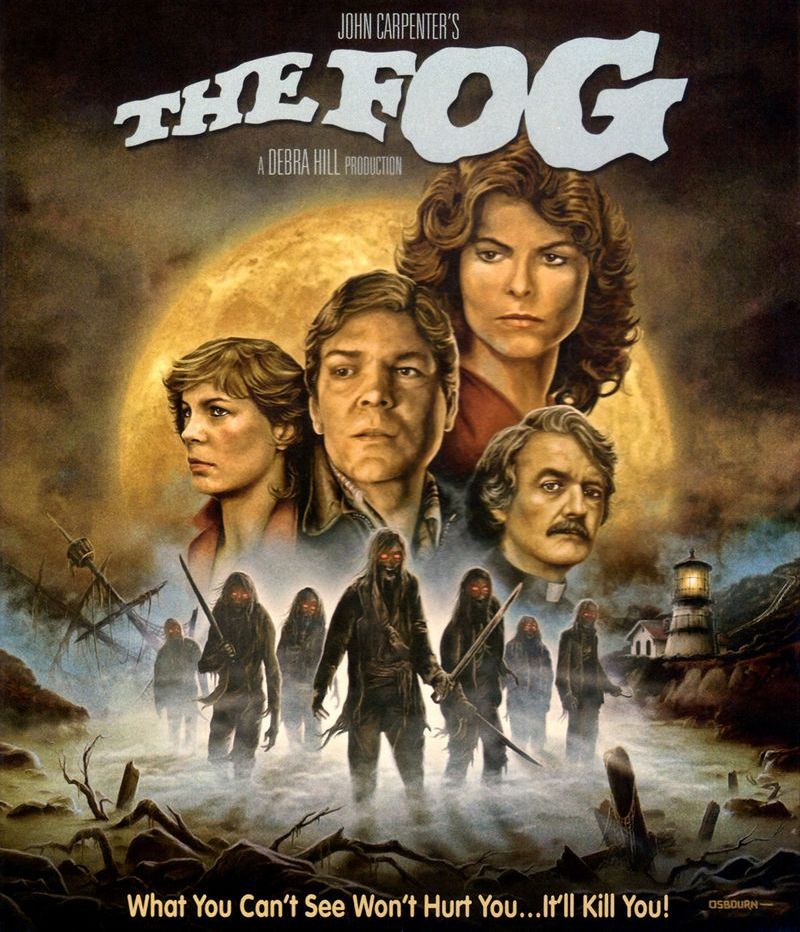 In my John Carpenter career retrospective, I’ve now crossed the Rubicon: moving past the director’s most famous and successful film and entering the 1980s, a decade his movies helped define and often looked far beyond … frequently to their initial box office detriment.
In my John Carpenter career retrospective, I’ve now crossed the Rubicon: moving past the director’s most famous and successful film and entering the 1980s, a decade his movies helped define and often looked far beyond … frequently to their initial box office detriment.
The decade opens with Mr. Carpenter in a slight quandary: when you just made the most profitable independent movie of all time (a record unbeaten until The Blair Witch Project more than twenty years later), there’s going to be a bit of pressure for the follow-up. Carpenter stuck with the horror genre for his next film, although a much different type than the realistic slasher of Halloween. Taking inspiration from classic ghost stories, the vengeful corpses of EC Comics, and a trip to Stonehenge, Carpenter and producer Debra Hill came up one of the best low-budget horror elevator pitches: magical fog brings pirate leper ghosts to unleash their wrath on a small seaside town. Yep, pirate leper ghosts.
The Story
Antonio Bay, a sleepy coastal Northern California town where nothing happens, is preparing to celebrate its hundredth anniversary of being a sleepy coastal town where nothing happens. Then everything starts to happen at once when the ghosts aboard the Elizabeth Dane, a leper colony ship that sank near Spivey Point a century ago (timing!), slosh ashore in a shroud of thick, luminescent fog. It turns out Antonio Bay was founded on a double-cross that tricked the leper colony out of their gold and lured their ship with false beacons into wrecking on the shoals. The murderous specters and their pointy fishing tools make a mess out of the lives of folks in Antonio Bay, including lighthouse keeper and radio DJ Stevie Wayne (Adrienne Barbeau), the anniversary event organizer Mrs. Williams (Janet Leigh), a hitchhiking artist (Jamie Lee Curtis), and a priest who’s discovered the dreadful truth about the town’s history (Hal Holbrook).
The Positives
The Fog has faced an uphill struggle finding critical and audience appreciation since its premiere. The slope it’s trying to negotiate is so steep because behind it on the road are Assault on Precinct 13 and Halloween, and ahead of it are Escape From New York and The Thing. Think about that for a moment: four undisputed genre masterpieces that are among the most loved and influential films of all time. The Fog seems minor sitting in the middle of this brilliance. But it’s minor only by degree, because when compared to the glut of early ‘80s horror movies rather than to the Carpenter canon, The Fog is a fine fright flick with excellent visuals, smart scene direction, and a good cast.
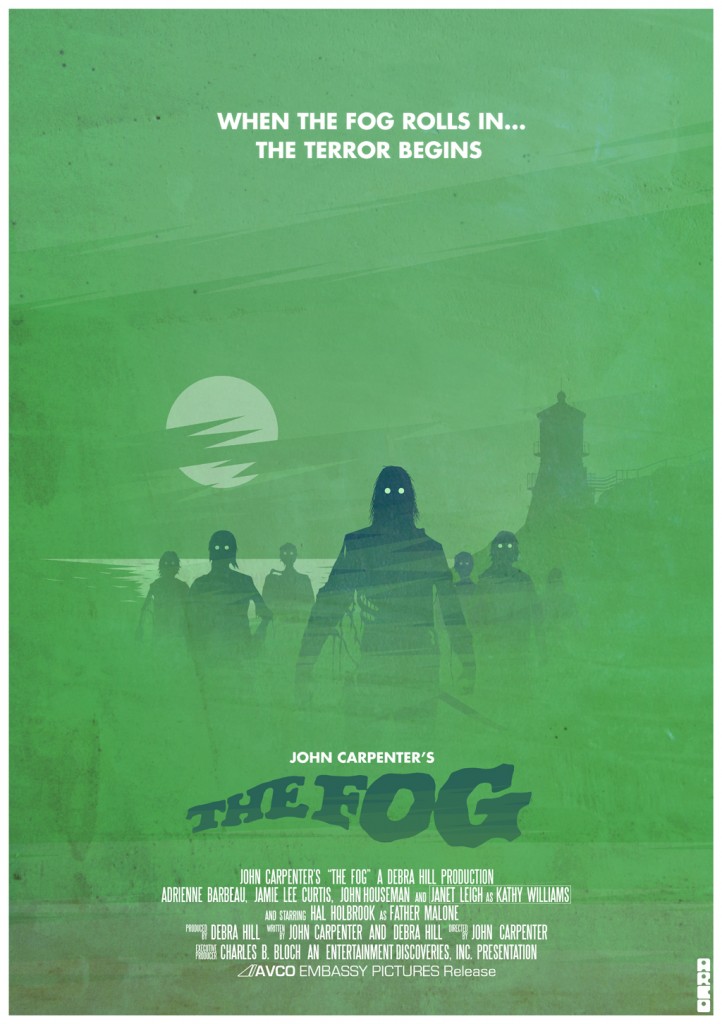 And The Fog has enjoyed a surge of renewed appreciation over the last decade thanks to the reviled 2005 remake. Nothing makes a movie shine brighter than having the early-2000s horror rehash grinder try to deface it. (The Omen ‘76 would like to thank you, Omen ‘06.) Even though it will never surpass its neighbors in the Carpenter filmography, it no longer seems outrageous to rank The Fog among the upper half of the director’s movies.
And The Fog has enjoyed a surge of renewed appreciation over the last decade thanks to the reviled 2005 remake. Nothing makes a movie shine brighter than having the early-2000s horror rehash grinder try to deface it. (The Omen ‘76 would like to thank you, Omen ‘06.) Even though it will never surpass its neighbors in the Carpenter filmography, it no longer seems outrageous to rank The Fog among the upper half of the director’s movies.
A horror film titled The Fog needs to have atmosphere. Plenty of it. Thankfully, the movie swims in the aura of a New England ghost story thanks to superb low-budget effects and top-notch work from cinematography legend Dean Cundey in his second collaboration with Carpenter. These visuals and the atmosphere of the spooky New England ghost fable overcome story problems inherent in early versions of the script and the reshoots trying to correct them.
Although much of the story doesn’t make logical sense, it comes out of old fireside-tale traditions from New England and Cornwall, where “wreckers” were reputed to lure storm-tossed ships into the rocks so they could loot the demolished remains. Carpenter and Debra Hill’s script draws specifically on a shipwreck that occurred near Goleta, California in the nineteenth century. There’s a veracity to Antonio Bay’s history and a sense of a deeper mythology behind events that holds the movie together when the action and actual plot aren’t managing it.
This is one of “prettier” of the John Carpenter films that Dean Cundey shot. There are more daylight sequences, and the locations in Point Reyes and Inverness, CA offered opportunities for the cinematographer to create breathtaking landscape shots. Most memorable is the camera following Stevie Wayne down to the lighthouse. The expanse of the ocean, the cliffsides, and the steep flight of 300+ stairs is stunning and makes the film feel epic. It’s also a touch unnerving, showing an effective use of daylight and open spaces in a horror movie.
Cundey’s camera doesn’t slouch in the nighttime sequences either. The best jump scare is a fake one, where Father Malone abruptly emerges from the dark half side of the frame to accidentally frighten Mrs. Williams. It’s an ingenious use of the black parts of the image and keys viewers to remain on alert for this type of trickery later. It’s not only fog that hides danger.
The Fog is the first John Carpenter film where you can sense a stock company of players coming together. We have Jamie Lee Curtis, Charles Cyphers, Tom Atkins, Buck Flower, Adrienne Barbeau, Nancy Loomis, and Darwin Joston. Even though this is the first Carpenter appearance for Atkins and Flower (Barbeau previously appeared in a Carpenter-directed television movie), they already feel like part of a larger stable actors who mesh well with the director’s world. In hindsight, this is one of the better Carpenter Company ensembles, with the terrific single-movie additions of Hal Holbrook, Janet Leigh, and John Houseman. To solidify it, most of the character names are references to other Carpenter collaborators: Nick Castle, Dick Baxter, Dan O’Bannon, and Tommy Wallace. And Darwin Joston’s one-scene character is named “Dr. Phibes” just for funsies.
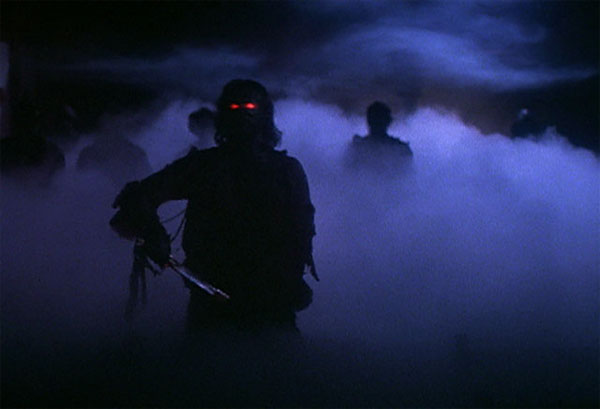 Houseman plays a character whose name is a literary reference (to Welsh weird story author Arthur Machen). Mr. Machen only appears in the prologue where he tells a ghost story to children around a beach bonfire that establishes the backstory of the Elizabeth Dane. The scene was part of the reshoots, and it succeeds at the task of setting the mood while taking care of the onerous aspects of exposition. Just by placing the exposition in the mouth of John Houseman, it becomes great, the same way Donald Pleasance made his exposition great in Halloween.
Houseman plays a character whose name is a literary reference (to Welsh weird story author Arthur Machen). Mr. Machen only appears in the prologue where he tells a ghost story to children around a beach bonfire that establishes the backstory of the Elizabeth Dane. The scene was part of the reshoots, and it succeeds at the task of setting the mood while taking care of the onerous aspects of exposition. Just by placing the exposition in the mouth of John Houseman, it becomes great, the same way Donald Pleasance made his exposition great in Halloween.
The breakout character and strongest link in the movie is Adrienne Barbeau’s Stevie Wayne. She’s a newcomer to Antonio Bay, a single mother who left behind her radio career in Chicago to broadcast from a lighthouse at Land’s End. She’s the “awareness hero,” the special type of John Carpenter protagonist who’s more attuned to the world — and what might be wrong with it — than the others. It’s a pleasure simply to watch Barbeau transition on screen between Stevie Wayne’s radio persona and her reality. And I’d definitely listen to Stevie Wayne’s radio program. It’s a nice late-night selection and she croons relaxingly between the platters.
Carpenter re-wrote most of his score as part of reshaping the film during the reshoots. Although it lacks a memorable central theme, the music is an excellent moody addition to the atmosphere and summons up the sense of dark, sinister waters. It’s a worthy entry in Carpenter’s musical catalogue.
Although I have many questions about the ghosts’ behavior toward Father Malone in finale in the church, the last thwaaack! shot closes the movie on a high note.
The Negatives
The rough cut of The Fog underwhelmed everyone, particularly its director. (“It sucked, it was terrible,” Carpenter said in a candid interview for one of the home video releases.) The editing, reshoots, and added scenes designed to shore up the feature for release managed the job; on the basic level of an atmospheric and visual horror film, The Fog delivers. But the rough edges of the inferior first cut peek through, and some of the reshot footage — around a third of the running time — doesn’t blend smoothly with the rest.
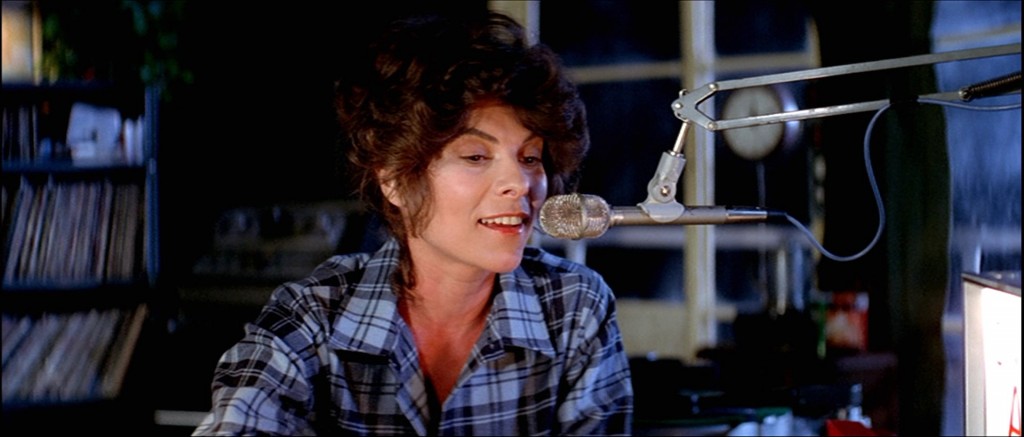 It’s unnecessary for every piece of information to fit together in a horror film constructed on atmosphere (look a few years ahead to Carpenter’s Prince of Darkness to see how this can work effectively). But The Fog offers a traditional ghost story with the promise that events will eventually make some sense, which results in a film that grows looser and less gripping as it moves toward the finale. This isn’t weirdness for weirdness sake but glitches due to hasty reshoots aimed to goose up more scares.
It’s unnecessary for every piece of information to fit together in a horror film constructed on atmosphere (look a few years ahead to Carpenter’s Prince of Darkness to see how this can work effectively). But The Fog offers a traditional ghost story with the promise that events will eventually make some sense, which results in a film that grows looser and less gripping as it moves toward the finale. This isn’t weirdness for weirdness sake but glitches due to hasty reshoots aimed to goose up more scares.
This rickety nature of the story is most evident in the way it handles the “vengeance” part of the “ghostly vengeance”: it’s not really there. The warning “6 MUST DIE” on the magic piece of wood sounds ominous, but in practice it means little. The ghosts of the Elizabeth Dane are apparently targeting the descendants of the original six conspirators who betrayed them and stole their gold. But except for Father Malone hastily mentioning this as the fog closes in on the church, the idea is barely developed. Wouldn’t it have made for a tighter, tenser story if the audience already understood which townspeople were the six descendants and discovered more about the extent of their ancestors’ complicity? The victims of the ghosts seem like a random assortment, as if any six will do as substitutes, and that’s a less interesting premise since it removes the blood guilt. Only Father Malone is really ruffled by the revelation that the founders of Antonio Bay committed an unconscionable act of betrayal and murder. This robs the movie of an exciting angle.
(Which brings up an interesting comparison: the 2005 remake addressed the specific conspirators and tied them with their contemporary descendants. This is the type of change you expect from a remake trying to fix issues in its source material. Yet The Fog ‘05 is still a heap of rotting cod. Even with a messy story structure, John Carpenter can direct the hell out of individual scenes, a talent beyond anybody working on the 2005 re-run.)
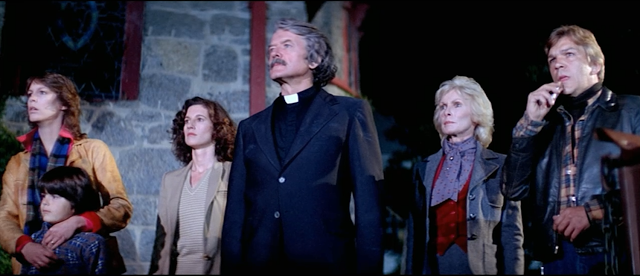 Many other specific events in The Fog don’t make a lick o’ sense. How did the town become rich off the gold from the Elizabeth Dane if most of it was smelted into a massive golden crucifix sealed into the walls of the church? Why does one of the bodies from the Sea Grass re-animate in the hospital only to collapse moments later, even though this never happens with any other victims? Why did a gold doubloon that washed up on the beach turn into a piece of wood with the ship’s name on it, then leak seawater? Why the sudden influx of poltergeist activity in the town that lasts only an hour? If the ghosts are targeting people who are descendants of the town founders, why bother attacking Stevie Wayne, an outsider with zero connection to San Antonio’s past who isn’t even in their way? Aside from the shock value of the coda, is there a reason for the ghosts to leave Father Malone alive after their first confrontation and then return a short time later to finish the job?
Many other specific events in The Fog don’t make a lick o’ sense. How did the town become rich off the gold from the Elizabeth Dane if most of it was smelted into a massive golden crucifix sealed into the walls of the church? Why does one of the bodies from the Sea Grass re-animate in the hospital only to collapse moments later, even though this never happens with any other victims? Why did a gold doubloon that washed up on the beach turn into a piece of wood with the ship’s name on it, then leak seawater? Why the sudden influx of poltergeist activity in the town that lasts only an hour? If the ghosts are targeting people who are descendants of the town founders, why bother attacking Stevie Wayne, an outsider with zero connection to San Antonio’s past who isn’t even in their way? Aside from the shock value of the coda, is there a reason for the ghosts to leave Father Malone alive after their first confrontation and then return a short time later to finish the job?
Another place where the movie veers away from an interesting dramatic line is that Kathy Williams’s husband is one of the men killed and sea-water saturated aboard the Sea Grass. But Ms. Williams’s connection to the Sea Grass victims is a “blink and you’ll miss it” moment mentioned early in the film amidst Mrs. Williams having another yap session with her assistant (Nancy Loomis). It then pops up again much later with Williams getting teary-eyed before giving her speech at the celebration ceremony. Viewers are more likely to be confused about this: “Wait, the guy who we barely met on the fishing ship before a leper ghost fish-hooked him is Janet Leigh’s husband … or maybe her nephew … or … ?”
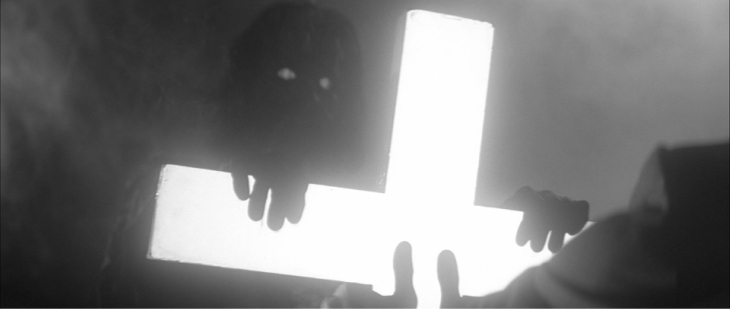 I appreciate the performances from both Jamie Lee Curtis as Elizabeth Solley and Tom Atkins as Nick Castle in their section of the story (Curtis is notably good in a role written as the opposite to awkward teenager Laurie Strode in Halloween). But they’re easily the least interesting part of that story, and once they’ve filled their script purpose of finding the bodies on the Sea Grass, they have scant reason to hang around. Elizabeth Solley gives the feeling that there might be more to her background, but the script doesn’t offer much past the surface, and her fast hook-up relationship to Castle never ties her into Antonio Bay in a meaningful way. She’s loitering to add another potential victim and to give Jamie Lee Curtis a reason to be there for the Halloween lead actress value.
I appreciate the performances from both Jamie Lee Curtis as Elizabeth Solley and Tom Atkins as Nick Castle in their section of the story (Curtis is notably good in a role written as the opposite to awkward teenager Laurie Strode in Halloween). But they’re easily the least interesting part of that story, and once they’ve filled their script purpose of finding the bodies on the Sea Grass, they have scant reason to hang around. Elizabeth Solley gives the feeling that there might be more to her background, but the script doesn’t offer much past the surface, and her fast hook-up relationship to Castle never ties her into Antonio Bay in a meaningful way. She’s loitering to add another potential victim and to give Jamie Lee Curtis a reason to be there for the Halloween lead actress value.
Stevie Wayne brings a sense of panic to the flow of the fog into Antonio Bay, but it would be better if the rest of the town picked up on that fear with more urgency. Charles Cyphers’s weatherman, one of the major characters to get offed, merely walks out the door to his death without an inkling anything is wrong. This type of kill is fine in the first half of a horror movie, but it occurs at a moment when the tension should be ratcheting up for the finale. Not until the last ten minutes does genuine panic set in for Antonio Bay, and by that point the action shuts itself up in the church for a siege climax where the rest of the town matters not at all.
The Pessimistic Carpenter Ending
Surprise! After their apparent “peace out” confrontation with Father Malone, the ghosts come back to whack him (literally) anyway. Now how are they’re going to fence that giant gold crucifix?
Next: Escape From New York
Ryan Harvey is one of the original bloggers for Black Gate, starting in 2008. He received the Writers of the Future Award for his short story “An Acolyte of Black Spires,” and his stories “The Sorrowless Thief” and “Stand at Dubun-Geb” are available in Black Gate online fiction. A further Ahn-Tarqa adventure, “Farewell to Tyrn”, is currently available as an e-book. Ryan lives in Costa Mesa, California where he works as a professional writer for a marketing company. Occasionally, people ask him to talk about Edgar Rice Burroughs or Godzilla in interviews.
Nice write-up, Ryan.
Yeah, this is one to enjoy for its superior atmosphere and scares, not for its head-scratching plot.
To my mind the best moment of the film comes very early on, and seems so piercingly evocative of the best classic ghost stories that it makes the movie for me.
When the big, formidable-looking sailor stares, across the night-shrouded deck of his little boat, at the black, featureless figure wrapped in fog, standing on the deck of a ship that shouldn’t even be there.
And he whispers, “Who is that?” in a voice like that of a little boy waking up in his room and seeing the monster in his closet.
Brrrr. I actually felt that along my spine.
My New England relatives used to tell me stories of the wreckers among our Cornish forebears. I didn’t realize we were party to a whole genre of ghost story!
“But it’s minor only by degree, because when compared to the glut of early ‘80s horror movies rather than to the Carpenter canon, The Fog is a fine fright flick with excellent visuals, smart scene direction, and a good cast.”
Agree 100%. A fine choice when you’re lining up the classic chillers for Hallowe’en viewing.